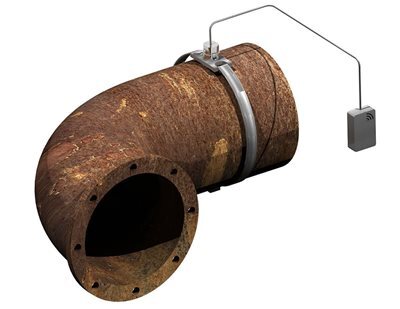Projects
Ongoing projects
The highly diverse and motivating projects that Dynamo undertakes allow for the exploration of new avenues and ensure that our laboratory maintains its position as a prolific catalyst for innovation in developing effective and practical solutions.
If you are studying at ÉTS and are interested in joining Dynamo, consult the descriptions of projects available to students.
Machine dynamics
The objective of this project is to develop an experimental method for evaluating the performance of new damper designs that take advantage of the properties of materials with auxetic structures.
Main Researcher: Sébastien Lalonde
Team:
- Master's Degree:
- Loïc Macaire Sidjou Nzali
Industrial partner: Siemens
Duration: 2021-2023
The objective of this project is to develop a gear transmission that offers an infinitely variable velocity ratio for electric road vehicles at every power level. The final design and driving management are optimized using metaheuristic methods.
Main Researcher: Raynald Guilbault
Team:
- Master's Degree with Thesis:
- Abdelhakim Khaldi
Funding: NSERC
Duration: May 2021 - may 2023
Gears are everywhere. Their durable lifetime and 95% to 99% performance efficiency make them a crucial element in transmitting mechanical energy. Adding texture to the contact surfaces separated by a film of oil would have a beneficial effect in terms of reducing friction and improving efficiency. This research will lead to the development of an effective method for resolving the fluid film inside gears in the presence of micro-cavities. It will also allow for optimal patterns for micro-textures to be defined using metaheuristic methods. The project is co-directed by Noël Brunetière from the Pprime Institute at the University of Poitiers in France.
Main Researcher: Raynald Guilbault
Team:
- Doctoral program:
- Charles Aboussafy
Funding: NSERC, Scholarship from ÉTS and bursary from Hydro-Québec
Duration: January 2021 - december 2024
Structures dynamics
The objective of this project is to develop tools for estimating the damage to high-voltage wires that are subjected to vibrations. The development of advanced digital analysis solutions will allow for complete characterization of the load conditions that result in damage to wires.
Main Researcher: Sébastien Lalonde
Team:
- Master's degree:
- Alexandre Mongrain
Duration: 2021 - 2024
The proposed PhD research project is part of a larger project involving the design of an instrumented suspension clamp that is capable of detecting and monitoring the degradation of in-service power transmission strands. The objective of the proposed PhD research project is to produce a finite element modelling procedure for numerical prediction of strand fatigue life.
Main Researchers:
Industrial partner: Helix Uniformed
Funding: NSERC - CRD
Duration: Up to December 2024
Development of a method for analyzing wire fatigue that combines digital models and inter-related experimental studies. The objective is the fine analyse of damage mechanisms at the metallic strand scale, taking into consideration the overall kinematics of the wires.
Main Researcher: Sébastien Lalonde
Team:
- Master's degree:
- Liticia Kared
Funding: NSERC - Discovery
Duration: 2020-2025
Manufacturing process dynamics
This project involves experimental and digital studies of manufacturing and repair techniques for hydraulic turbine runners to maximize the duration of their life cycle by limiting and controlling the impact of residual stresses that cause cracking in welded joints.
Main Researcher:
Team:
- Master's degree:
- Mathieu Devar (completed)
- Doctoral:
- Pierre-Antony Deschênes
- Mehrdad Hosseini
- Reza Bab Nadi
- Navneeth Rajakrishnan
- Gabrielle Turcot
- Post-doc:
- Ali Vedaei Sabegh (completed)
Industrial partner:
- Hydro-Québec Research Institute (IREQ)
- Finkl Steel
Funding: NSERC - CRITM
Duration: May 2018 -
The objective of this project is to optimize lithium-ion cells for the three common formats: cylindrical, prismatic and pouch. Specific energy and power are the most important characteristics of all energy storage modes. Higher specific energy and power levels are desirable, but they are opposing values. Maximizing the energy affects the power, and vice-versa, making it impossible to maximize both simultaneously.
In reality, the specific energy of cells represents a problem in terms of the electrification of transportation. Therefore, the goal of this project is to define optimal mechanical configurations that produce the best compromise. This is done using metaheuristic methods.
Main Researcher: Raynald Guilbault
Team:
- Master's with thesis:
- Jean-Philippe Noël-Houde
Industrial partner: Center of Excellence in Transportation Electrification and Energy Storage (CEÉTSE) at the Hydro-Québec Research Institute (IREQ)
Funding: Mitacs and Hydro-Québec
Duration: January 2019 - december 2022
Inspection-characterization process dynamics
Development of a high-temperature ultrasonic probe for measuring thickness and detecting defects in equipment, such as refinery pipelines, for the purpose of continuous monitoring during operation, even under extreme high temperatures.
Main Researcher: Pierre Bélanger
Team:
- Doctoral:
- Sévan Bouchy
Funding: NSERC - Discovery
Duration: September 2019 - august 2023

The objective of this dissertation is to design a piezoelectric ultrasonic probe for in vivo diagnosis of osteoporosis at the early stages. Unlike current technologies, such as DXA or QCT, the diagnosis is not based solely on mineral density, but on all of the specific characteristics of the bone.
Main Researcher: Pierre Bélanger
Team:
- Doctoral:
- Aubin Chaboty
Funding: NSERC - Discovery
Duration: January 2021 - december 2024
Multisectoral projects
The objective of this project is to develop a new robotized machining strategy using two hexapods for collaborative machining operations. The main goal is to study the dynamics of robotized machining processes, optimize the trajectory of the tool and the cutting parameters for machining complex surfaces and develop a monitoring and control method.
Main Researchers:
Team:
- Master's degree:
- Hugo Mouthon
- Doctoral program:
- Yannick Cianyi
- Fatemeh Hosseini
- Postdoc:
- Kanglin Xing
Funding: NSERC
Duration: March 2020 -
Available research projects
Here is an updated list of opportunities available at Dynamo laboratory:
Structures pins that are exposed to impacts are subjected to “distributed shear force and bending moment” changes that are difficult to accurately evaluate due to flexibility and play among the parts of the assembly. The current criteria used for pins, namely “single shear” or “double shear”, which ignore the bending moment, are sometimes extremely conservative, and often produce oversized diameters, and therefore, non-optimized results.
Main Researcher: Van Ngan Lê
Area of expertise: Structures dynamics
Type of project: Master of Applied Sciences or PhD
Objective: Using experimental and digital studies, propose addition design criteria for the optimization of structures pins, taking into account impact energy, flexibility and play among the parts of the assembly.
Methodology: The student must describe the current state of affairs with respect to existing standards related to design criteria for pins, including those exposed to impacts, propose impact tests up to the rupture point of the pins, conduct digital finite element studies with reasonable hypotheses in order to produce rupture results that are consistent with the experimental tests, and propose new design criteria aimed at enhancing the optimization of structures pins.
Start date: To be determined
High-voltage conductors are exposed to winds that cause vibrations. The amplitude of these wind vibrations ranges from a few millimetres to many centimetres, and frequencies range from 3 to 150 Hz. The vibration of wires generates cyclic stress that causes fatigue and internal wear (of the strands). The main recourse in the industry for reducing this phenomenon is the use of Stockbridge type dynamic dampers, which are attached to wires at specific locations.
Wind forces depend in large part on the geographic location of the facilities, but there is also a significant randomness factor. The dynamic dampers must be of the multi-frequency type. Due to their mechanical nature, Stockbridge dampers dissipate vibrational energy through friction and the generation of head. They are also much less effective outside of their targeted frequency range.
In reality, the vibration of wires, and specifically high-voltage conductors, represents an underexplored source of energy. The objective of this research project is to define the actual energy potential of wind vibrations of aerial wires and to develop new dampers that will capture this energy instead of dissipating it. These new dampers will be specifically designed to effectively cover wider frequency ranges than those currently covered by Stockbridge-type mechanical dampers.
Main Researchers:
Area of expertise: Machine dynamics and structures dynamics
Type of project: Doctoral
Objective: Develop an energy-recovery damper with a wide effective range.
Sub-objectives:
- Develop a digital model for evaluating the available vibration energy of conductors as a function of wind conditions;
- Identify the optimal method for converting the available vibration energy into storable electrical energy;
- Integrate the energy conversion method into a damping device covering a maximum range of conductor vibration frequencies.
Start date: To be determined
High voltage transmission lines around the world are aging, and they require more and more inspection and repair operations. The proposed PhD research project is part of a larger project that proposes the design of an instrumented suspension clamp that is capable of detecting and monitoring the degradation of in-service power transmission strands. The objective of the proposed PhD research project is to produce a finite element modelling procedure for numerical prediction of strand fatigue life. The project methodology rests on an existing finite element model that offers detailed descriptions of internal conductor forces. While the original modelling strategy has already been published by members of the project team, the present PhD research project aims to complete the procedure by adding interwire contact stress analysis to allow for wear and fatigue degradation predictions for conductors close to suspension clamps.
Main Researchers:
Area of expertise: Structures dynamics
Objectives:
- To develop a generic suspension clamp/conductor modelling procedure based on an existing model in order to identify the critical points of the conductor close to the clamp (based on wear and fatigue);
- To establish the relationship between available experimental SN curves obtained for existing suspension clamp/conductor combinations and the critical points predicted using the numerical procedure;
- To analyze the quality of the loading severity predictions obtained from the standard Yb descriptor and identify more efficient damage descriptors if necessary;
- To evaluate the possibility of combining experimental SN curves established for known clamps with the modelling procedure in order to predict the fatigue life of new clamp geometries.
Industrial partner: Helix Uniformed
Funding: NSERC - CRD
Start date: Summer or Fall 2022
Submitting an application for a project
In addition to the official admission process at ÉTS, applications must be submitted to Dynamo by filling out the following form or contacting the professor responsible for the project that you are interested in.
Your application file must include the following:
- An updated CV;
- The names of universities from which you have obtained diplomas;
- Complete transcripts related to your diplomas.
In order to ensure the successful completion of research projects, skill levels will be assessed based on available projects, the areas of interest indicated in the application and the grades attained in core subjects.


